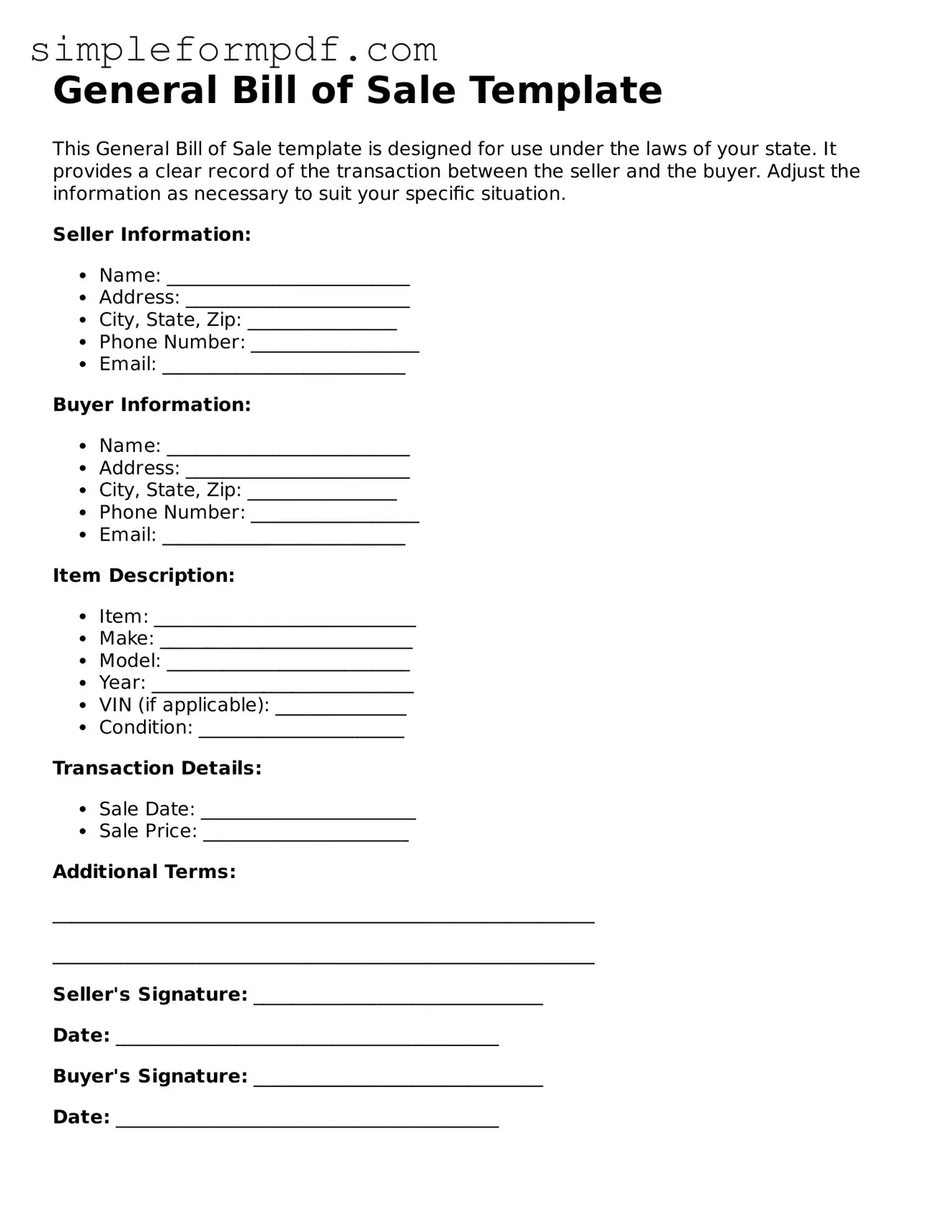General Bill of Sale Template
This General Bill of Sale template is designed for use under the laws of your state. It provides a clear record of the transaction between the seller and the buyer. Adjust the information as necessary to suit your specific situation.
Seller Information:
- Name: __________________________
- Address: ________________________
- City, State, Zip: ________________
- Phone Number: __________________
- Email: __________________________
Buyer Information:
- Name: __________________________
- Address: ________________________
- City, State, Zip: ________________
- Phone Number: __________________
- Email: __________________________
Item Description:
- Item: ____________________________
- Make: ___________________________
- Model: __________________________
- Year: ____________________________
- VIN (if applicable): ______________
- Condition: ______________________
Transaction Details:
- Sale Date: _______________________
- Sale Price: ______________________
Additional Terms:
__________________________________________________________
__________________________________________________________
Seller's Signature: _______________________________
Date: _________________________________________
Buyer's Signature: _______________________________
Date: _________________________________________
This document serves as proof of the sale and transfer of ownership. Be sure both parties retain a copy for their records.
